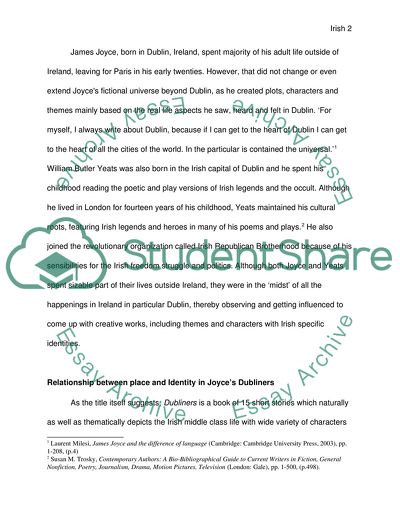Cite this document
(Relationships between Place and Identity in Irish Writing - Focusing o Essay, n.d.)
Relationships between Place and Identity in Irish Writing - Focusing o Essay. https://studentshare.org/literature/1745142-discuss-the-relationships-between-place-and-identity-in-irish-writingfocusing-on-joyce-dubliners-and-wb-yeats-selected-poems
Relationships between Place and Identity in Irish Writing - Focusing o Essay. https://studentshare.org/literature/1745142-discuss-the-relationships-between-place-and-identity-in-irish-writingfocusing-on-joyce-dubliners-and-wb-yeats-selected-poems
(Relationships Between Place and Identity in Irish Writing - Focusing O Essay)
Relationships Between Place and Identity in Irish Writing - Focusing O Essay. https://studentshare.org/literature/1745142-discuss-the-relationships-between-place-and-identity-in-irish-writingfocusing-on-joyce-dubliners-and-wb-yeats-selected-poems.
Relationships Between Place and Identity in Irish Writing - Focusing O Essay. https://studentshare.org/literature/1745142-discuss-the-relationships-between-place-and-identity-in-irish-writingfocusing-on-joyce-dubliners-and-wb-yeats-selected-poems.
“Relationships Between Place and Identity in Irish Writing - Focusing O Essay”. https://studentshare.org/literature/1745142-discuss-the-relationships-between-place-and-identity-in-irish-writingfocusing-on-joyce-dubliners-and-wb-yeats-selected-poems.


